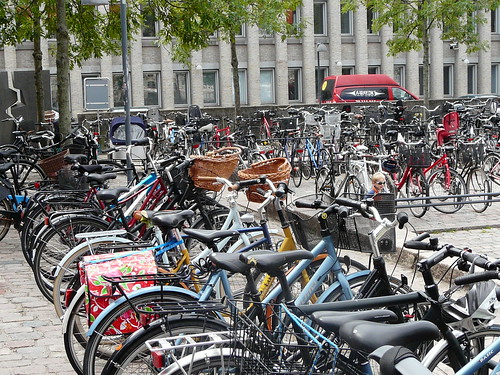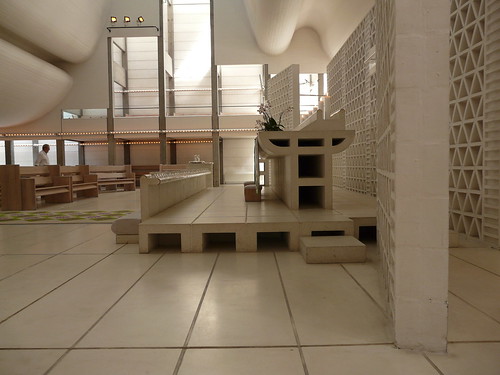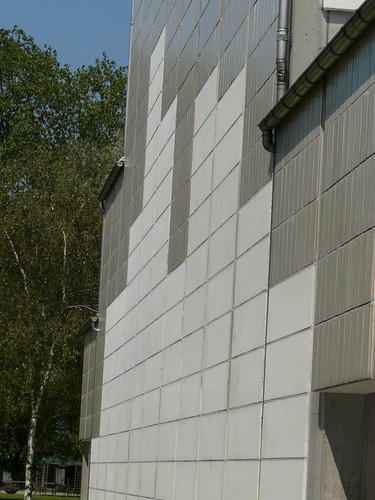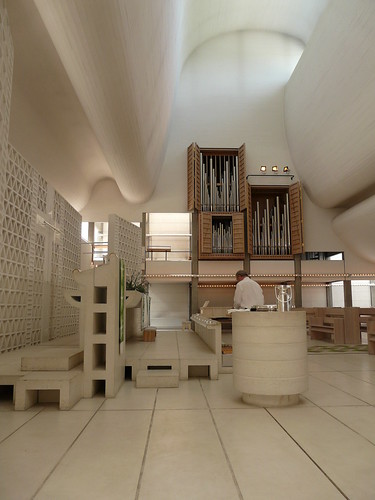
As I have noted before, we visited Copenahgen recently and whilst we there, we hired bikes for a few days - to see what all the fuss is about. We both got "omafiets" style bikes; Raleigh "Hire Bikes" as they were labelled. Unremarkable but sturdy and straightforward machines. One had a Bobike style seat on the pannier rack for carrying No.1 son. They had three hub gears, front pull brake and rear coaster brake - something that I had not used before and which needed some getting used to. The most tricky thing for me was not being able wind the pedals back whilst waiting at a junction to get into the best "launch" position, as I am used to. I did get the hang of preparing the pedals as I came to a stop but a bit more practice is needed.A detail I noticed, which would seem trivial to a Copenhager, was that the reason all the girls look so elegant on their bikes is the excellent riding position they adopt, no doubt as their mothers taught them. Key to this, it seems, is having the seat set high enough so that you get a full leg stretch on the downstroke. For most, this means you can't sit on the seat and touch the ground with your foot, but the low frames make a quick forward dismount easy. Often, I see UK cyclists who have the seat far too low and probably also lack the confidence to ride with this set up - which I presume is more efficient.
We got the hang of the cycle lanes quite quickly. There is a definite slow zone to the right and fast zone to the left (closer to the road), although it seems there are complaints in Copenhagen about the widths of the cycle lanes and the unpleasant sensation of faster bikes whizzing past you with only inches to spare. This is a nice illustration of the difference in emphasis between a mature cycling culture such as that found in Denmark and good ol' Blighty, where the thing whizzing past just inches away isn't a bike, it's a bin lorry or white van going at 45mph.
The cycle lanes are segregated from the pedestrian pavement by a standard upstand kerb and from the road carriageway by a low profile kerb. I was struck by how narrow the residual pedestrian pavement was, with congestion often a problem where shops had displays outside, or lots of bikes were parked.
It took a while to get to grips with the Copenhagen left hand turn (is this called a "box" turn?). To turn left, you raise your hand and pull in to join the queue of bikes waiting to cross the junction in the perpendicular direction, rather than moving across the traffic into the centre of the road and then crossing the oncoming traffic, in the vehicular style. It is a bit slower, having to effectively wait for two sets of traffic lights to turn, but then the pace seems to be that much slower and steadier anyway that it doesn't really matter - not mixing with the traffic means the bike beneath you goes at its own pace. You don't need to attempt to match car-speed to stay safe and consequently you seem to eat up the miles with very little effort.
The system of dedicated bike signals and separated lanes at key junctions is effective, if a little daunting for the newcomer - although it is not designed to make the tourists feel at home, but to be practical and convenient for the (vast) A-to-B brigade. Parking is simplicity itself. Just stop more or less anywhere and there will be some bikes parked. Pull up, drop the kickstand, secure the fitted rear wheel lock and walk away. No hunting for a stand or lampost thin enough to get the D-Lock around. In fact, the hardest part is finding it again in the inevitable sea of identical looking bikes that will have accumulated whilst you were away.


Not all roads have cycle lanes - only the ones where the mismatch between speed of car and speed of bike is at its most. Thus, most residential road are low speed and cycling is on-road. Through Copenhagen centre, the main avenues have the most densely used cycle lanes. This is an interesting contrast to current tactics in the UK, where cyclists are often urged to find circuitous, but quiet, back roads. In Copenhagen, the main roads are the most direct and thus the most used by cyclists wanting a fast route from A to B. So the big H.C. Andersens Boulevard (8 lanes of traffic in places) is also a significant cycling artery, which is completely logical and legible.The experience of cycling in Copenhagen was enjoyable, convenient, safe and instructive. And all the more frustrating for having that kind of cycling culture over there but not over here. Why ever not? I guess it is all in the details.











